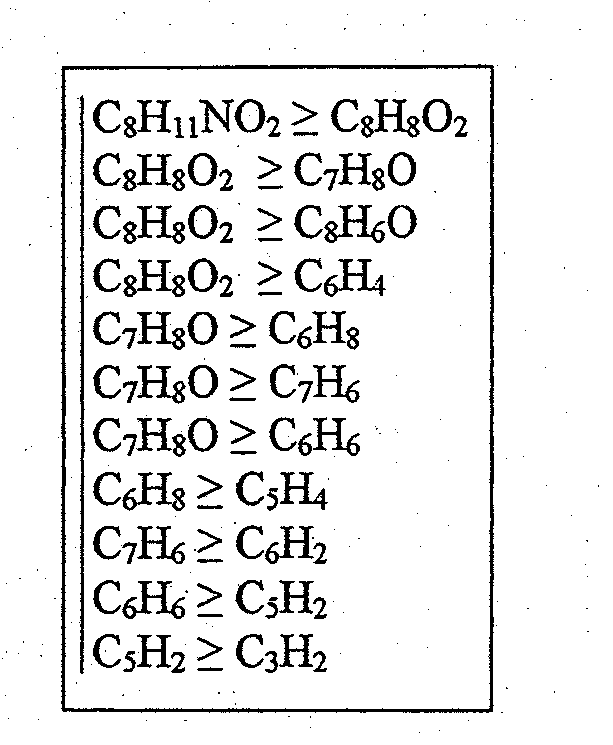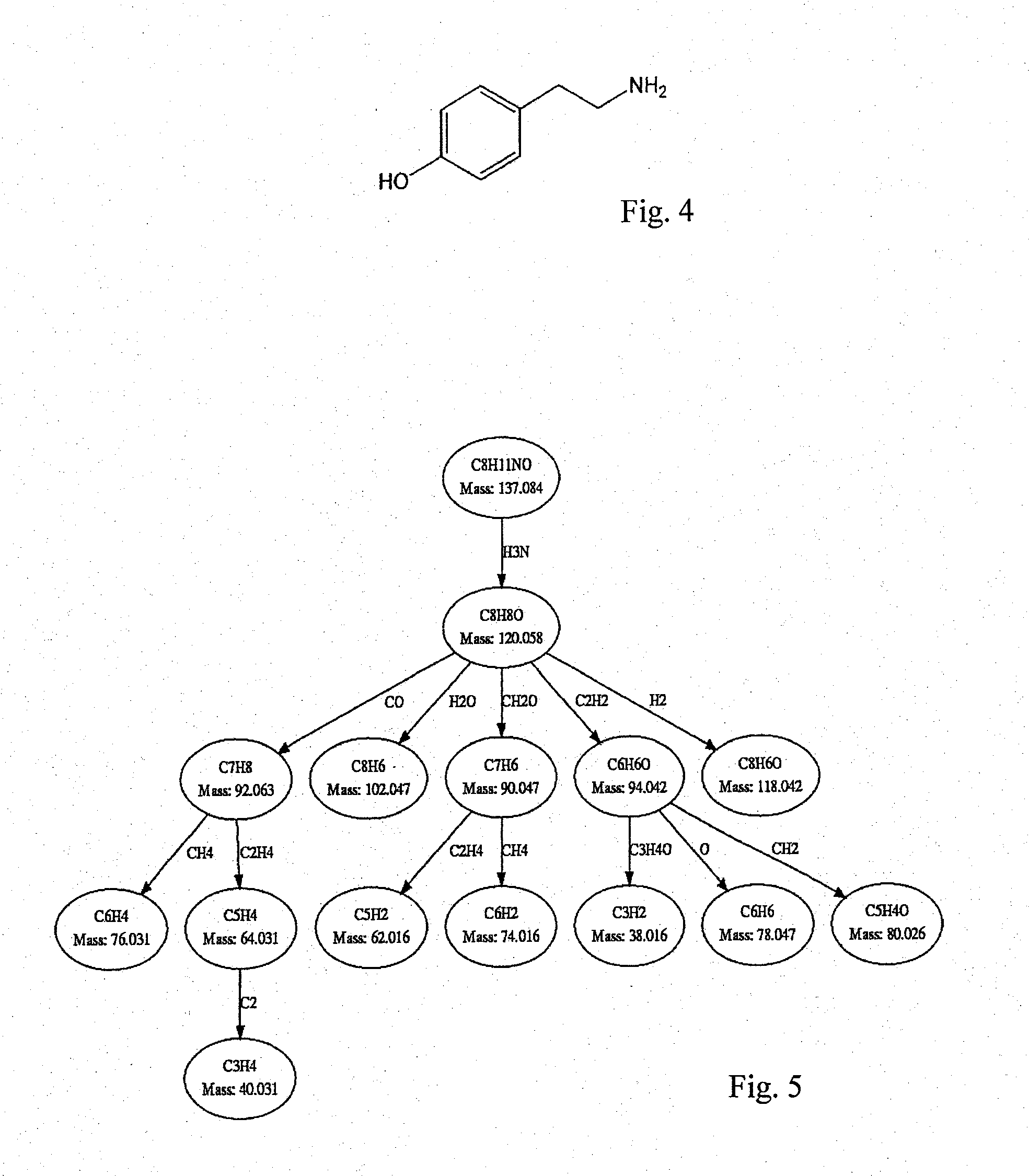Method for identifying in particular unknown substances by mass spectrometry
a mass spectrometry and substance technology, applied in mass spectrometers, material testing goods, particle separator tubes, etc., can solve the problems of rule-based approaches that cannot process error-containing data, methods that cannot be used at all for unknown substances, and most of the substances produced by living beings are still completely unknown in research. , to achieve the effect of high accuracy
- Summary
- Abstract
- Description
- Claims
- Application Information
AI Technical Summary
Benefits of technology
Problems solved by technology
Method used
Image
Examples
Embodiment Construction
[0055]a) Determination of Structural Similarities:
[0056]The determination of the structural similarities of two or more substances is explained in the following using the substances dopamine and tyramine as an example. Both substances belong to the biogenic amines and have a very similar structure (see FIGS. 1 and 4).
[0057]In the typical application one of the two structures will be unknown. Then, assumptions about this structure can be made by means of this method. The example introduced here shall explain an approach for this task.
[0058]Both dopamine and tyramine have been examined by tandem mass spectrometry. The fragmentation was performed by means of collision induced dissociation (CID) known per se. However, it is also possible to use other mass spectrometry methods, e.g. MSn, or other fragmentation techniques.
[0059]Multiple fragmentation spectra (daughter ion spectra) have been measured for both substances and then hypothetical fragmentation patterns have been calculated. It ...
PUM
 Login to View More
Login to View More Abstract
Description
Claims
Application Information
 Login to View More
Login to View More - R&D
- Intellectual Property
- Life Sciences
- Materials
- Tech Scout
- Unparalleled Data Quality
- Higher Quality Content
- 60% Fewer Hallucinations
Browse by: Latest US Patents, China's latest patents, Technical Efficacy Thesaurus, Application Domain, Technology Topic, Popular Technical Reports.
© 2025 PatSnap. All rights reserved.Legal|Privacy policy|Modern Slavery Act Transparency Statement|Sitemap|About US| Contact US: help@patsnap.com



